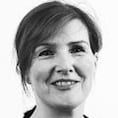In our very visual social media age many of us have learned to accentuate the positive and eliminate the negative. When it comes to making our homes work for us and maximising their potential, either by renting them short-term on Airbnb, house swapping or taking in a lodger, it pays to make the abode look as sharp as possible – so that potential renters or buyers will swipe right and not left.
How you do this is a bit of a dark art. Lighting can be used to illuminate dark rooms, strategically placed accessories can make a shabby sofa look rather Scandi but it is the layering of several photographic exposures into a single “blended” or “composite” image to highlight all of a room’s assets in one shot that showcases all its best features all at the same time. “In essence this will give the photo, a two-dimensional image, a sense of being in a 3D space,” explains Ross Killeen, a former estate agent who set up MediaPro, a home photographing business that now shoots more than 2,000 properties a year.
Before he visits a house he sends the owners a checklist, with suggestions on how to make the house camera-ready. Taking down net curtains and removing personal photographs from all surfaces are some of his pointers. But some houses are beyond mere window dressing. He’s had incidences where the house has a caved-in roof or floor – features you can’t skip around – that still need to be photographed to give possible buyers a real idea of how the place looks and how much work is required, he explains.
0 of 4
Before you take a single shot you need to clean up and declutter, says Donal Murphy, who works with Róisín Lafferty of Kingston Lafferty Design and architectural practices RKD, MCA and Henry J Lyons. "You're trying to capture the essence of a space and extraneous stuff will just distract from that, so start by excluding things," says the Dublin snapper whose work has graced the pages of Architectural Digest, Image Interiors and House & Home magazines as well as online at Dezeen and Design Milk.
Making people happy
When captured on camera, other people’s lives always look so polished and perfect, says Richard Beer, a photographer who has made a name for himself shooting homes for sale over the €1 million, recently photographing Yvonne Keating’s former home in Malahide which was selling for €2.45 million. The truth, of course, is that real life is not that perfect so to give your home a chance you need to “straighten pictures on walls, make sure curtains aren’t drooping and that any blown down-lighters or spot lights have been replaced” before letting a photographer cross your threshold.
Lighting is also crucial, says Mark Scott whose work has appeared on the pages of Elle Décor and The Gloss and whose clients include Little Greene, Wedgewood, Sophie Conran and Dublin firm Lyons Kelly. "It is also important to figure out the right time of day to photograph a room. If a room is too sunny the light will make it look very harsh. The term photography means painting with light, so often lighting from behind or towards a window will be more flattering to the space."
How you angle and compose your shots is another consideration, Scott says. “Shoot through a doorway, rather than showing the whole room, creates drama and intrigue. Those viewing the pics want to know what is out of shot and will proceed through the gallery of pictures. If you photograph the whole room in one go, that mystique is gone.”
Photographers working for estate agents wouldn’t necessarily agree. Most use a wide-angle lens to capture the complete room as renters and buyers want to see all that is on offer but Beer cautions against going overboard on this technique saying: “There’s no point in making a kitchen look the size of a ballroom if in reality it is only a small galley style space.”
As social animals we love to see the fruits of our home renovations rewarded, says Philip Clayton-Thompson and Donna Pizzi of US-based Blackstone Edge Studios, a prolific photographic agency in the home magazine category in the States. World of Interiors and Elle Décor have enlisted their services.
"Interior photography has the ability to make people happy," says Clayton-Thompson who learned about lighting from some of the greats such as Lord Snowdon and Cornel Lucas. He also covered the Troubles in Northern Ireland winning awards at the 1973 Chicago Film Festival for his film A Place Called Ardoyne, subsequently releasing Ardoyne, the 2015 award-winning music video based on that footage.
Composition
When the pair met Pizzi, a maths major, was working as a writer on American soap opera The Edge of Night.
Maths comes into play in the composition of their shots, Pizzi says. Pi, also known as the golden ratio, creates a sense of balance and beauty in nature which, she explains, is replicated, both consciously and unconsciously, in design and composition.
“In home photography this often means playing with perspective and proportions and not always placing the object of attention in the centre of the shot,” Pizzi says. “It just makes the shot more visually interesting.”
If you want to see what your home will like in shots, take photos of it on your phone first to see how each room will look and how its decor will photograph, she says. The trick then is to “fill in the gaps that appear in the image – gaps that may not be visible to the naked eye – ideally using objects or things that are unique or interesting in their own right, not just items you’ll find in chain stores like Ikea”.
Photograph every room with your smart phone and then critically analyse each room, deciding what works and what doesn’t. Remove anything that doesn’t. Either recycle it or store it in a friend’s garage until the house has been rented or sold. A fresh coat of paint outside and indoors is another very simple way to make it look stronger in pics.
There is joy in this kind of work because home owners see their hard work realised, Pizzi says. “In a way it honours the soul of the house, showing the beauty and colour that lifts the personality of the structure.”
Professionals may use software to erase unsightly cracks on walls, sockets on walls and lamp wires, tweaking colour contrast to dull down varnished wooden floors that appear too orange, even grading the colour so that all pictures of the house will appear as if photographed in the same light.
But in real life you should keep this to a minimum, Beer says. He prefers to tie electric cables behind lamps so that they’re out of sight and likes to keep the number of light switches and plug sockets in shot to a minimum.
But before you do anything kill the lights, is Scott’s final word on the subject. “Shots taken in natural daylight will be much more pleasing to the eye and look far more contemporary.”
PHOTOGRAPHERS
Blackstoneedge.com
Markscottphotography.co.uk
Donalmurphyphoto.com
Richard Beer, tel: 086 2599229
Ross Killeen, Mediapro.com
TIPS
Photographer Ross Killeen of MediaPro’s checklist:
1. Ensure there are no immovable objects blocking the house such as broken cars or skips.
2. Clean windows, cut the grass and trim hedges.
3. Remove net curtains from windows at the front of the house and any other rooms to be photographed.
4. Replace any bulbs/lamps that are not working throughout the house and ensure all lights are functional.
5. Tidy, tidy, tidy. If you have open shelves stack the contents symmetrically.Store away toys. Tuck computer and TV leads out of sight as much as possible.
6. Take stuff away, particularly personal items. Coffee tables, sideboards and mantles should be kept as clear as possible from all family/personal photographs.
7. Keep kitchen worktops clear of cleaning materials, excess utensils/appliances and take down fridge magnets and notice boards. Kettle and toaster are fine to leave.
8. Any items above kitchen cupboards should be taken down.
9. Don’t plonk a bunch of lilies in a vase and expect it to light up a room or move it from room to room as you take your photographs. Choose appropriate flowers for each space. It doesn’t have to be a big bouquet – some simple garden flowers in a jug can make space look more friendly.
10. Dress beds in any rooms that will be photographed.






















